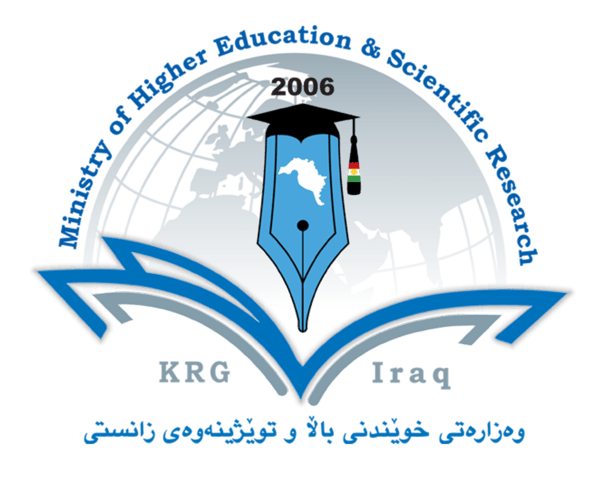Efficacy of powered endoscopic dacryocystorhinostomy in treatment of nasolacrimal duct obstruction
DOI:
https://doi.org/10.56056/amj.2022.135Keywords:
Endoscopic, Nasolacrimal duct obstruction, Dacryocystorhinostomy, NoseAbstract
Background and Objectives: To evaluate the success rate of the therapeutic effectiveness and safety of endoscopic dacryocystorhinostomy to treat obstruction of the lacrimal pathway.
Methods: The study involved prospective randomized case series. Operative and postoperative data were prospectively collected on 114 patients (120 eyes) who presented to Rizgary Teaching Hospital (Erbil city – Iraq) with epiphora and obstruction of the nasolacrimal system, from February 2013 until October 2017. All patients consecutively underwent endoscopic dacryocystorhinostomy. The follow-up evaluation included system evaluation and endoscopic assessment of the newly created ostium; the follow-up was done at 1 week, 1 month, and 3 months postoperatively, and results were compared between the different groups.
Results: A total of 120 cases of endoscopic dacryocystorhinostomy were performed on 114 patients. Procedure success rate was around 95.8%using a powered drill and endoscopic system with minimum complication. The age group of 25-44 years (45.8%) is the higher percentage and the female gender accounts for 83.3%. No complications were recorded in78.3% of the patients, while 10% had developed granulation tissue at the fistula site. Only 5%of the cases suffered from synechia and 5.7%were miscellaneous complications. No statistically significant differences were found between the surgery and age, gender, or side of the operation.
Conclusion: Powered endoscopic dacryocystorhinostomy is the most suitable treatment for patients at the level of the sac or in the nasolacrimal duct obstruction.
Downloads
References
Oerci M. Dacryocystorhinostomy. Diagnosis and treatment of nasolacrimal canal obstructions. Rhinology 2002; 40(02): 49-65.
Singh A, Narula V, Meher R. A new approach to endoscopic DCR. Barz. J. Otorhinolarygol 2012:78(5),7-11.
Huges SM. The history of lacrimal surgery. Adv Ophthalmic Plast Roconstr Surg.1986; 5:139-68.
McDonogh M, Meiring JH. Endoscopic transnasaldacryocystorhimostomy. J Laryngol Otol.1989;103(6);585-7.
Webr R K, Keerl R, Schaefer S D, Della Rocca RC. Atlas of lacrimal surgery.1st edition, springer-verlasg Berlin Heidelberg. 2007.pp 66.
Dantas RR. Lacrimal drainage system obstruction. Seminophthalmol. 2010; 25(3);98-103
Woog JJ, Kennedy RH, Custer PL, Kaltreider SA, Meyer DR, Camara JG. Endonasaldacryocystorhinostomy: report by the American academy of Ophthalmology. Ophthalmology. 2001; 108:2369-77
Wormald PJ. Powered endoscopic dacryocystorhinostomy. Laryngosope.2002;112;69-72
Khan MK, Hossain MA, Hossain MJ, Al-Masudo A, Rahman MZ. Comparative study of external and endoscopic endonasaldacryocystorhinostomy for treatment of chronic dacryocystitis. JAFMC Bangladesh. 2011;7;15-7.
Tarbet KJ, Custer PL. External dacryocystorhinostomy, surgical success, patient satisfaction and economic cost. Ophthalmology.1995; 102:1065-70.
Durrasula V, Gatland DJ. Endoscopicdacryocystorhinostomy, long term results and evolution of surgical techniques. J Laryngal Otol.2004;118;628-32.
Cokkeser Y, Evereklioglu C, Er H. Comparative external versus endoscopic dacryocystorhinostomy: results in 115 patients (130 eyes). Otolaryngol Head Neck Surg. 2000;123(4):488-91.
Salim R, Mohamadi S. Results of Endoscopic Endonasal Dacryocystorhinostomy; Necessity of Teamwork and Patient Selection Med Hypothesis. Discov Innov Ophthalmol. 2015; 4(3):114-9.
Lima F, Martins M, Jesus E, Santos A, Barreto V, Santos Júnior R. Endoscopic dacryocystorhinostomy: our experience and literature review. Rev. Bras. Oftalmol.2013;72(4).
Ramakrishnan VR, Hink EM, Durairaj VD. Kingdom TT. Outcomes after endoscopic dacryocystorhinostomy without mucosal flap preservation.AM J Rhinol.2007;21(6):753-7.
Pei-Yuan Su. Comparison of endoscopic and external dacryocystorhinostomy for treatment of primary acquired nasolacrimal duct obstruction. Taiwan J Ophthalmol. 2018; 8(1): 19–23.
Mak ST, IO IY, Wong AC. Prognostic factors for outcome of endoscopic dacryocystorhinostomy in patients with primary acquired nasolacrimal duct obstruction. Graefes Arch Clin Exp Ophthalmol. 2013;251(5):1361-7. doi: 10.1007/s00417-012-2228-9.
Nishi Gupta. Improving Results in Endoscopic DCR. Indian J Otolaryngol Head Neck Surg. 2011;63(1): 40-4. doi: 10.1007/s12070-010-0112-7.
Fayet B, Racy E, &Assouline M. systematic unciformectomy for a standardized endonasal dacryocystorhinostomy. Ophthalmology2002:109:530-6. DOI:10.1016S0161-6420(01)00977-0.
Tsirbas A, Wormald PJ. Endonasaldacryocystorhinostomy with mucosal flaps. Am J Ophthalmol. 2003; 135(1):76-83.
Jo YJ, Kim KN, Lee YH et al. Sleeve technique to maintain a large mucosal ostium during endoscopic dacryocystorhinostomy. Ophthalmic Surg Lasers Imaging. 2010; 41:656–9.
Downloads
Published
Issue
Section
License
Copyright (c) 2022 Muhammad Sherwani

This work is licensed under a Creative Commons Attribution 4.0 International License.
The copyright on any article published in AMJ (The Scientific Journal of Kurdistan Higher Council of Medical Specialties )is retained by the author(s) in agreement with the Creative Commons Attribution Non-Commercial ShareAlike License (CC BY-NC-SA 4.0)














